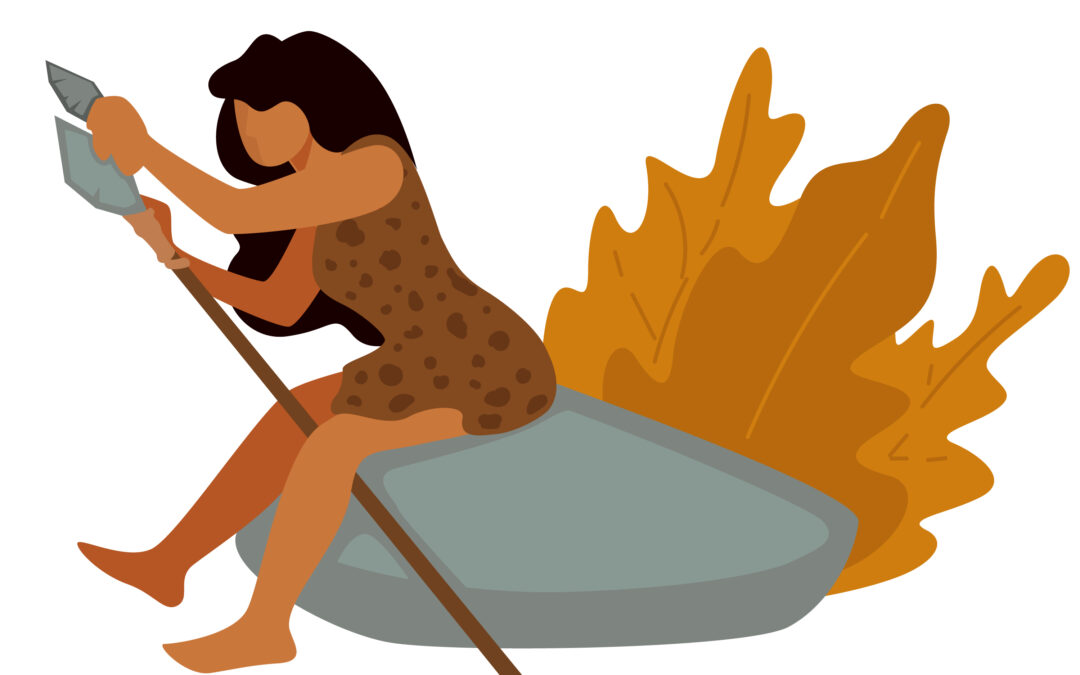Patriarchy has never represented natural history, nor prehistory: that’s what the book written by French palaeontologist Marylène Patou-Mathis, L’homme prehistorique est aussi une femme (Allary Editions), reveals. The author assures that thinking that women were submissive is the quite simply the result of prejudice.
The fact that our women ancestors used to hunt too is ascertained, partly thanks to a recently-published study on a 9,000-year-old Andean tomb, which revealed that the body found there, surrounded by stone hunting weapons, was the body of a woman (who was then named Wilamaya Patjixa, and was aged less than 19). However, Palaeolithic women were most likely painters and craftswomen too… but what evidence do we have of this ancient gender equality?
Interviewed by the Italian newspaper Repubblica, Ms Patou-Mathis said “Consider, above all, the burials: in the Palaeolithic period there were no major differences between the funeral furnishings of men and women, including the lavish hairstyles. Today, we have techniques that allow us to conduct very accurate investigations: for example, we can actually discover that some skeletons belonged to females, even if they appear to be rather robust. We can even understand what kind of physical activity our female ancestors did, because repeated traumas to tendon insertion points, such as those caused by throwing heavy projectiles and, in the Neolithic period, even by using agricultural tools, leave marks in the bones. One can also find out what kind of food they eat, and it turns out that there was no difference between men and women. Finally, we have art… A study of caves in France and Spain shows that several hands belonged to women, because of their size and the ratio of the middle finger to the other fingers, and the difference between them and the palm width. Could these women not also be the authors of paintings and graffiti? It is astonishing that studies – conducted by men – have, until recently, basically always assumed that sculptors and painters were male. The truth is that we do not know, but if we stick to a prejudice that is still anchored to 19th century studies, everything concerning creativity is male-related. The vision of a dichotomy of roles has been imposed on us, and in my opinion this did not exist in the Palaeolithic: it simply was another world, and it is possible that it partly consisted of matrilineal societies. Sexual differences became more evident with time.”
But why do we have this androcentric heritage, this backward discrimination? The answer is simple: everything was studied and narrated from a male standpoint, with a male voice. Science is bound to the era in which it conducted, and religions have not helped either. “The inferiority stemming from a divine order was coupled with an inferiority dictated by nature”, Marylène Patou-Mathis writes. Indeed, according to 19th-century doctors, “the anatomical and physiological identity of women gives them specific temperaments and functions”: apparently, they were “physically weak, psychologically unstable and intellectually inferior to men, and less suited to invention since they are less creative”.
Has everything finally been finally clarified then? Not really… prejudice has not yet been entirely eradicated. The Parisian palaeontologist lists a few examples of such prejudice and debunks them in order to isolate the gender gap from afar, telling everyone that no, patriarchy is not our history, nor natural prehistory.

Recent Comments